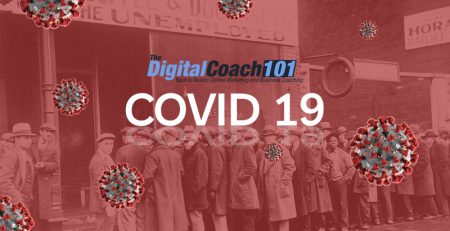LinkedIn Profile Optimization: Unlocking Your Professional Success
Introduction:
In today’s digital age, LinkedIn has become the go-to platform for professionals to connect, network, and showcase their expertise. With over 774 million users worldwide, having an optimized LinkedIn profile is crucial for unlocking your professional success. Your LinkedIn profile acts as your digital business card, allowing you to make a lasting impression on potential employers, clients, and industry peers.
By strategically optimizing your profile, you can maximize your visibility, attract valuable connections, and open doors to exciting opportunities. In this blog post, we will guide you through the essential steps of LinkedIn profile optimization, equipping you with the knowledge and strategies to take your professional presence to new heights.
Section 2: Understanding the LinkedIn Algorithm
LinkedIn utilizes a sophisticated algorithm to determine the visibility and reach of your profile. To optimize your profile effectively, it’s crucial to understand how this algorithm works. The LinkedIn algorithm takes into account various factors to prioritize and recommend profiles to its users. By aligning your profile with these factors, you can increase your chances of appearing in relevant search results and gaining more exposure.
One important aspect is engagement. LinkedIn values profiles that actively engage with the platform and its users. This includes actions such as sharing insightful content, commenting on posts, and participating in industry-related discussions. When you engage consistently, LinkedIn recognizes your profile as active and relevant, leading to increased visibility.
Another factor is relevance. LinkedIn aims to show users profiles that are most relevant to their searches. To enhance your profile’s relevance, you need to incorporate relevant keywords and phrases throughout your profile. Think about the skills, experiences, and industry-specific terms that are most important to your professional identity. By strategically including these keywords, you increase the chances of your profile appearing in relevant searches.
Furthermore, LinkedIn values the completeness of your profile. A complete profile provides more information for the algorithm to analyze and understand your professional background. Ensure that all sections of your profile, such as work experience, education, certifications, and skills, are filled out comprehensively. This not only helps the algorithm but also provides visitors with a more detailed view of your expertise.
Understanding these factors and aligning your profile accordingly will help you navigate the LinkedIn algorithm and increase your visibility. In the next section, we will dive into crafting an attention-grabbing headline and summary for your profile.
 Section 3: Crafting an Attention-Grabbing Headline and Summary
Section 3: Crafting an Attention-Grabbing Headline and Summary
Your LinkedIn headline and summary play a crucial role in capturing the attention of visitors and conveying your professional brand. When optimizing your profile, it’s essential to craft a headline and summary that effectively highlight your unique value proposition and make a memorable impression.
The headline is the first thing people see when they come across your profile. It should be concise, compelling, and showcase your area of expertise. Instead of simply stating your job title, consider adding a punchy descriptor or unique selling point that sets you apart. For example, instead of “Digital Marketing Manager,” you could write “Results-Driven Digital Marketing Strategist | ROI-focused Campaign Optimization.”
Moving on to the summary section, this is your opportunity to tell your professional story and provide a comprehensive overview of your skills, experiences, and goals. Make it engaging and personal, letting your personality shine through. Share your passion for what you do and highlight key achievements that demonstrate your expertise. Remember to incorporate relevant keywords naturally throughout your summary to improve searchability.
To make your summary even more impactful, consider adding a call-to-action (CTA) at the end. This could be an invitation to connect, collaborate, or explore new opportunities. It encourages engagement and can lead to valuable connections.
When crafting your headline and summary, always keep your target audience in mind. What are the specific keywords or phrases they might search for when looking for professionals in your field? By incorporating these keywords strategically, you increase the chances of appearing in relevant searches and attracting the right audience to your profile.
By optimizing your headline and summary, you can make a strong first impression and entice visitors to explore your profile further.
Section 4: Optimizing Your Profile Photo and Background Image
Visual elements play a significant role in creating a professional and impactful LinkedIn profile. When optimizing your profile, don’t overlook the importance of your profile photo and background image. These visual elements can leave a lasting impression on visitors and contribute to your overall branding.
- Profile Photo: Your profile photo is one of the first things people notice when they visit your profile. It’s crucial to choose a high-quality, professional-looking photo that accurately represents you and your personal brand. Dress appropriately for your industry, maintain a friendly and approachable expression, and ensure the photo is well-lit and focused. Avoid using overly casual or unprofessional images. Remember, your profile photo should inspire trust and convey professionalism.
- Background Image: The background image, also known as the LinkedIn cover photo, is an opportunity to showcase your personality and professional interests. Select a visually appealing image that aligns with your personal brand. It could be a photo related to your industry, a snapshot of your work environment, or an image that represents your expertise. Ensure the image is high-resolution and properly sized to fit the LinkedIn dimensions (1584 x 396 pixels). Avoid cluttered or distracting backgrounds that can detract from your profile’s overall aesthetic.
By optimizing your profile photo and background image, you create a visually appealing and cohesive presentation. This helps build trust, enhances your professional image, and encourages visitors to engage with your profile further. In the next section, we will explore the importance of showcasing your experience and skills effectively.
Section 5: Showcasing Your Experience and Skills
One of the primary purposes of your LinkedIn profile is to highlight your professional experience and skills. Optimizing these sections effectively is essential for attracting the right opportunities and making a strong impression on visitors. Here are some key strategies for showcasing your experience and skills:
- Strategic Positioning: Start by prioritizing your most relevant and impactful experiences. Place them prominently in the “Experience” section, ensuring they align with your career goals and target audience. Provide concise yet descriptive summaries of your roles, highlighting key achievements, responsibilities, and measurable results. Use action verbs and quantitative data where possible to showcase your accomplishments effectively.
- Keyword Optimization: Incorporate relevant keywords throughout your experience section to optimize your profile for search visibility. Think about the specific skills, industry terms, and job titles that are relevant to your field. Use these keywords naturally in your descriptions to increase the chances of your profile appearing in relevant searches.
- Skills Endorsements: LinkedIn offers a dedicated section for skills endorsements. Take advantage of this feature by including skills that accurately represent your expertise. Prioritize skills that are in-demand in your industry and have a high relevancy to your target audience. Encourage colleagues and connections to endorse your skills, as endorsements add credibility to your profile.
- Recommendations: Recommendations are powerful social proof that can strengthen your professional reputation. Request recommendations from colleagues, supervisors, clients, and others who can speak to your skills and work ethic. Aim for quality recommendations that provide specific examples and highlight your key strengths.
- Volunteer Experience: Don’t overlook the value of volunteer experience. If you have volunteered for organizations or contributed your skills outside of your professional work, include these experiences in the “Volunteer Experience” section. This demonstrates your commitment to community engagement and showcases additional skills and interests.
By effectively showcasing your experience and skills, you create a compelling narrative of your professional journey and highlight your areas of expertise.
Section 6: Crafting a Compelling About Section
The “About” section of your LinkedIn profile provides an opportunity to craft a compelling narrative about yourself and your professional journey. It’s a chance to showcase your personality, values, and unique selling points. When optimizing your profile, pay careful attention to this section to create a strong and engaging impression. Here are some key tips for crafting a compelling About section:
- Authenticity and Storytelling: Be authentic and let your personality shine through. Share your passion for your industry, your career goals, and the impact you strive to make. Use storytelling techniques to engage your readers and create an emotional connection. Highlight key milestones, challenges you’ve overcome, and your motivation for pursuing your chosen path.
- Value Proposition: Clearly communicate your unique value proposition. Identify what sets you apart from others in your field and articulate how your skills and expertise can benefit potential employers or clients. Focus on the value you bring to the table and the problems you can solve.
- Relevant Achievements: Showcase your most relevant achievements and successes. Highlight key projects, awards, certifications, or milestones that demonstrate your expertise and credibility. Use specific examples and data whenever possible to provide tangible evidence of your accomplishments.
- Target Audience Focus: Tailor your About section to resonate with your target audience. Consider the needs, challenges, and aspirations of the professionals or clients you want to attract. Speak directly to them, addressing their pain points and showcasing how you can provide solutions or add value.
- Keyword Optimization: Incorporate relevant keywords and industry-specific terms in your About section. This helps optimize your profile for search visibility and ensures that your profile appears in relevant searches. Strike a balance between keyword optimization and natural language flow to maintain readability.
- Call-to-Action (CTA): End your About section with a compelling call-to-action. Invite readers to connect with you, reach out for collaborations, or explore potential opportunities. Encourage engagement and make it easy for interested individuals to take the next step.
By crafting a compelling About section, you can effectively communicate your personal brand and make a lasting impression on visitors to your profile.
Section 7: Enhancing Your Recommendations and Endorsements
LinkedIn provides valuable features for collecting recommendations and endorsements from colleagues, clients, and other professional connections. These social proof elements play a crucial role in building credibility and showcasing the quality of your work. When optimizing your profile, it’s important to focus on enhancing your recommendations and endorsements. Here’s how you can do it:
- Request Quality Recommendations: Reach out to past and current colleagues, supervisors, mentors, or clients and politely request a recommendation. When asking for a recommendation, be specific about the skills or projects you would like them to highlight. Seek recommendations from individuals who can provide genuine and detailed insights into your work ethic, expertise, and character.
- Provide Recommendations in Return: A great way to receive recommendations is to give them as well. Offer to write recommendations for colleagues or clients whose work you genuinely appreciate and admire. When you provide a recommendation, be specific, highlight their strengths, and provide examples of their accomplishments. This reciprocity can lead to receiving quality recommendations in return.
- Highlight Recommendations Strategically: Showcase your best recommendations prominently on your profile. Choose recommendations that are relevant to your target audience and reflect the skills and qualities you want to emphasize. Feature them in the “Featured” section of your profile or strategically place them in the relevant sections, such as under specific roles or projects.
- Seek Endorsements for Key Skills: Actively seek endorsements for your skills from colleagues, clients, or industry peers. Reach out to connections and politely request an endorsement for skills that are relevant to your profession. Endorsements add credibility to your profile and provide social proof of your expertise.
- Personalize Your Endorsements: When endorsing others, take the time to personalize your endorsements. Provide specific examples or instances where you have observed their skills in action. This personalized touch adds value to your endorsements and shows that you genuinely appreciate their expertise.
By enhancing your recommendations and endorsements, you can build a strong reputation and demonstrate the quality of your work to potential employers, clients, and collaborators.
Section 8: Leveraging Multimedia and Visual Content
In today’s digital age, visual content plays a vital role in capturing attention and conveying information effectively. When optimizing your LinkedIn profile, don’t underestimate the power of multimedia and visual elements. By leveraging these elements strategically, you can enhance your profile’s engagement and make a memorable impression. Here are some key strategies for utilizing multimedia and visual content on your LinkedIn profile:
- Videos and Presentations: Incorporate videos and presentations to showcase your work, share insights, or provide valuable tips. You can upload videos directly to your profile or include links to platforms like YouTube or SlideShare. Choose content that is relevant to your profession and demonstrates your expertise.
- Portfolio Samples: If applicable, include samples of your work in your profile. This could be links to articles you’ve written, projects you’ve completed, or designs you’ve created. Showcasing tangible examples of your work allows potential employers or clients to assess your capabilities and get a glimpse of your professional accomplishments.
- Visual Design and Infographics: Visual design elements and infographics can effectively communicate complex information in a visually appealing way. Consider creating infographics that highlight key statistics, industry trends, or your professional achievements. Use color, icons, and charts to make the information more engaging and easy to understand.
- Professional Photos or Images: Alongside your profile photo and background image, consider incorporating other relevant professional photos or images. These could include images from conferences or events you’ve attended, snapshots of your work in action, or visuals that reflect your industry or area of expertise. Choose high-quality images that align with your personal brand.
- Visual Branding Consistency: Ensure that your visual content aligns with your personal branding and is consistent with your overall professional image. Use a consistent color scheme, font, and design elements across your visual content. This consistency reinforces your brand and creates a cohesive and polished profile.
By leveraging multimedia and visual content, you can bring your profile to life, showcase your work visually, and capture the attention of visitors.
Section 9: Building and Nurturing Your LinkedIn Network
LinkedIn is a powerful networking platform that allows you to connect with professionals in your industry, expand your network, and unlock new opportunities. When optimizing your profile, it’s essential to focus on building and nurturing your LinkedIn network. Here are some key strategies for effective networking on LinkedIn:
- Strategic Connections: Be strategic in the connections you make on LinkedIn. Seek out professionals in your industry, colleagues, mentors, thought leaders, and potential clients or collaborators. Connect with individuals who align with your professional goals and can add value to your network.
- Personalized Connection Requests: When sending connection requests, personalize your message. Mention how you came across their profile, express your interest in connecting, and highlight any commonalities or shared interests. Personalized connection requests are more likely to be accepted and can lead to meaningful connections.
- Engagement and Interaction: Actively engage with your network by commenting on posts, sharing valuable content, and participating in industry-related discussions. Interacting with others demonstrates your expertise and thought leadership while building relationships with fellow professionals. It also increases your visibility within your network.
- LinkedIn Groups: Join relevant LinkedIn groups in your industry or areas of interest. Participate in discussions, share insights, and connect with like-minded professionals. LinkedIn groups provide an excellent opportunity to expand your network, learn from others, and establish your presence as a thought leader.
- Personalized Messages: When reaching out to connections or responding to messages, take the time to personalize your responses. This shows that you value the connection and are genuinely interested in fostering meaningful relationships. Personalized messages help establish rapport and strengthen professional bonds.
- Offer Value and Support: Be proactive in offering support and providing value to your connections. Share relevant articles or resources, offer assistance or advice when appropriate, and congratulate connections on their achievements. By being helpful and supportive, you strengthen your professional relationships and build a reputation as a reliable and valuable connection.
By actively building and nurturing your LinkedIn network, you expand your reach, increase your professional visibility, and open doors to new opportunities.
Section 10: Optimizing for Keywords and SEO on LinkedIn
Just like optimizing a website for search engines, optimizing your LinkedIn profile for keywords and SEO can significantly improve your visibility and discoverability on the platform. By incorporating relevant keywords strategically, you increase the chances of appearing in search results and attracting the right audience. Here are some key strategies for optimizing your profile for keywords and SEO on LinkedIn:
- Keyword Research: Start by conducting keyword research relevant to your industry, profession, and target audience. Identify the specific terms and phrases that professionals in your field are likely to search for. Tools like LinkedIn’s search suggestions, Google Keyword Planner, or other keyword research tools can help you uncover relevant keywords.
- Strategic Placement of Keywords: Incorporate your targeted keywords naturally throughout your profile, including your headline, summary, experience descriptions, and skills section. However, avoid keyword stuffing, which can negatively impact the readability and authenticity of your profile. Focus on incorporating keywords in a way that enhances your content and context.
- Optimized Headline and Summary: Ensure that your headline and summary contain relevant keywords that accurately reflect your professional identity and expertise. This increases the chances of your profile appearing in relevant searches when professionals are seeking individuals with specific skills or qualifications.
- Skills and Endorsements: Select and list skills that are relevant to your industry and target audience. These skills act as important keywords in your profile. Be sure to prioritize the most important and in-demand skills. Encourage colleagues and connections to endorse these skills, as endorsements can further boost the visibility of your profile.
- Rich Content Optimization: If you have multimedia content, such as videos, presentations, or articles, optimize them by incorporating relevant keywords in titles, descriptions, and tags. This enhances the discoverability of your content within LinkedIn search results.
- Engage in Keyword-Relevant Conversations: Participate in discussions and comment on posts related to your industry or areas of expertise. Use relevant keywords naturally in your contributions to establish your knowledge and authority on those topics. This can increase your visibility and attract professionals interested in those keywords.
By optimizing your profile for keywords and SEO, you improve the chances of being discovered by professionals searching for specific skills, expertise, or industry-related topics.
Section 11: Keeping Your Profile Up to Date and Engaging
An optimized LinkedIn profile is not a one-time task; it requires regular maintenance and engagement. To make the most of your profile and unlock professional success, it’s crucial to keep it up to date and engage actively with the LinkedIn community. Here are some key strategies to consider:
- Regular Updates: Continuously update your profile to reflect your latest accomplishments, experiences, and skills. Add new projects, certifications, or relevant milestones as they occur. Keeping your profile up to date shows that you are actively involved in your professional growth and enhances your credibility.
- Content Sharing: Share valuable content on a regular basis to provide insights, engage your network, and establish yourself as a thought leader. Share industry news, helpful articles, or your own thought-provoking content. Consistent content sharing helps you stay visible and reinforces your expertise in your field.
- Engage with Your Network: Actively engage with your connections by liking, commenting, and sharing their posts. This shows your support and interest in their work. Additionally, respond to messages and connection requests in a timely manner to foster meaningful relationships. Engagement strengthens your network and opens doors to new opportunities.
- Participate in Groups and Discussions: Join industry-specific LinkedIn groups and actively participate in discussions. Share your insights, ask questions, and contribute to the community. Engaging in groups allows you to connect with like-minded professionals, gain industry knowledge, and expand your network.
- Utilize LinkedIn Publishing Platform: Leverage the LinkedIn Publishing Platform to publish long-form articles and showcase your expertise. This platform provides an opportunity to reach a wider audience and establish yourself as a credible source of knowledge in your field.
By keeping your profile up to date and engaging with the LinkedIn community, you demonstrate your commitment to professional growth and increase your visibility within your network.
Section 12: Measuring Success and Making Iterations
Measuring the success of your LinkedIn profile is crucial to understanding the effectiveness of your optimization efforts and making necessary improvements. By tracking key metrics and making iterations, you can continuously optimize your profile for better results. Here’s how you can measure success and make iterations:
- LinkedIn Analytics: Utilize LinkedIn’s built-in analytics tools to gain insights into the performance of your profile. LinkedIn provides data on profile views, post engagement, connection growth, and more. Analyze these metrics to understand which aspects of your profile are resonating with your audience and adjust accordingly.
- Track Conversion Metrics: If your goal is to generate leads or opportunities through your profile, track conversion metrics. Measure the number of inquiries, connections, or collaborations that resulted from your profile optimization efforts. This data helps you assess the impact of your profile and make informed decisions.
- Solicit Feedback: Seek feedback from trusted colleagues, mentors, or industry peers regarding your LinkedIn profile. Ask for their honest opinion on the effectiveness of your profile in conveying your professional brand. Use their feedback to identify areas for improvement and make necessary adjustments.
- Iterate and Optimize: Based on the insights and feedback you gather, make iterative improvements to your profile. Update sections, refine your messaging, and adjust your keyword strategy as needed. Continuously optimize your profile to ensure it aligns with your evolving goals and resonates with your target audience.
- Stay Updated on LinkedIn Features: LinkedIn regularly introduces new features and updates. Stay informed about these changes and explore how they can enhance your profile. By leveraging new features, you can stay ahead of the competition and maximize the potential of your profile.
By measuring success and making iterations, you ensure that your LinkedIn profile remains effective and aligned with your professional goals. Regularly assess your profile’s performance and make necessary adjustments to optimize your professional presence.
Conclusion
Congratulations! You’ve now gained valuable insights into optimizing your LinkedIn profile for professional success. By implementing the strategies and techniques discussed in this blog post, you can unlock new opportunities, expand your network, and enhance your personal brand on LinkedIn.
Remember, LinkedIn profile optimization is an ongoing process. Regularly update your profile, engage with your network, and share valuable content to stay visible and relevant. Monitor your profile’s performance using LinkedIn analytics and track conversion metrics to measure the effectiveness of your efforts.
Incorporate the characteristics of a highly influential blog into your LinkedIn presence. Be consistent in your activity, eloquent in your communication, and provide unique and thought-provoking insights to your audience. Showcase your passion, instructional guidance, and analytical prowess to establish yourself as a valuable professional in your field.
LinkedIn profile optimization is a powerful tool for unlocking your professional success. By crafting an attention-grabbing headline and summary, optimizing your profile photo and background image, showcasing your experience and skills, leveraging multimedia content, building and nurturing your network, optimizing for keywords and SEO, and keeping your profile up to date and engaging, you can elevate your professional presence and attract valuable opportunities.
So, take action now! Apply these strategies to your LinkedIn profile and watch as your professional success unfolds. Remember, your LinkedIn profile is your digital representation in the professional world. Make it shine, stand out, and let it unlock new doors of possibilities for your career.
Thank you for joining us on this journey of LinkedIn profile optimization. We wish you all the best in your professional endeavors!










